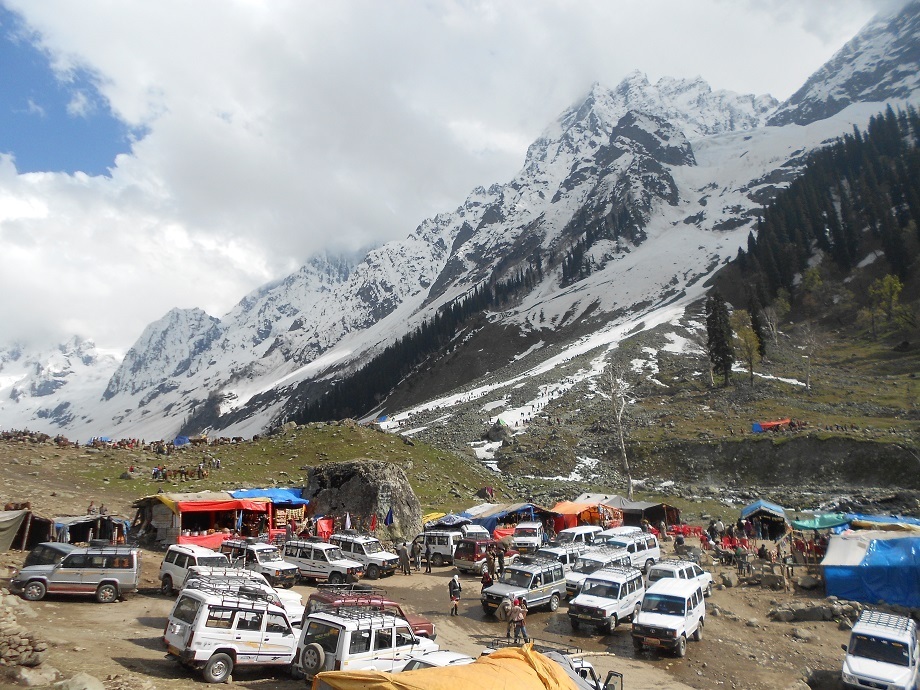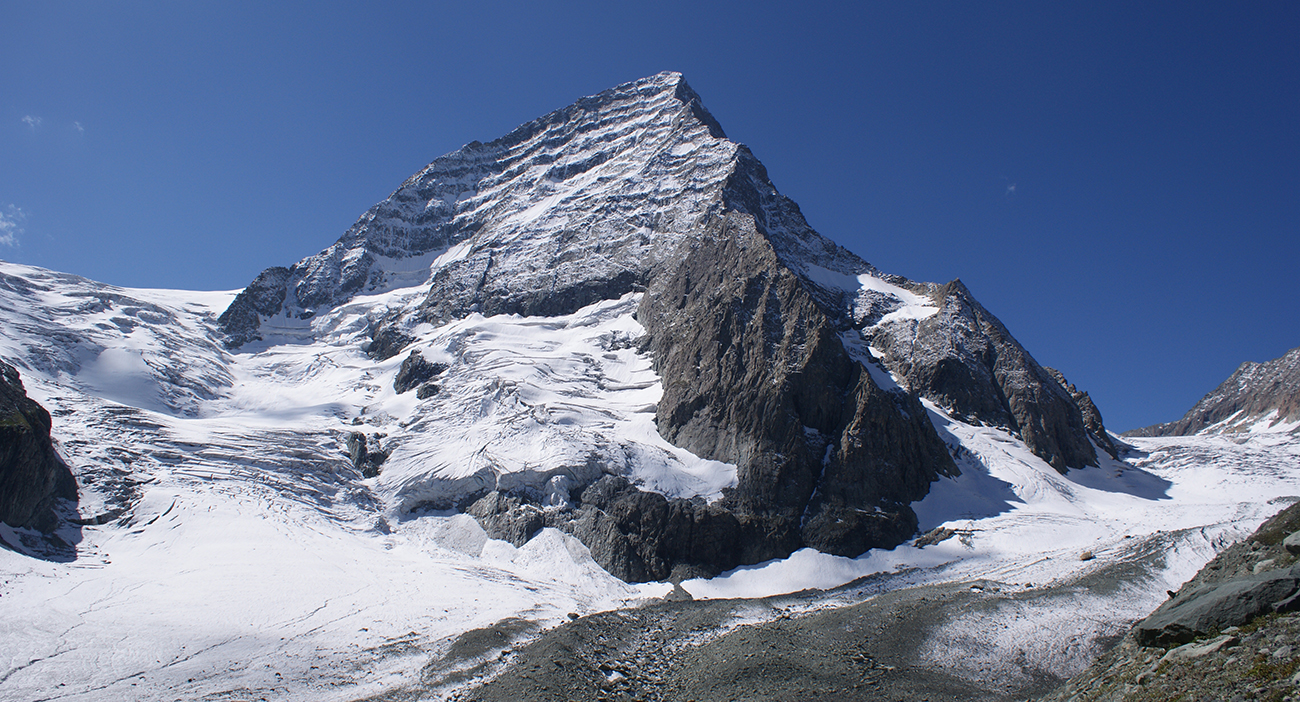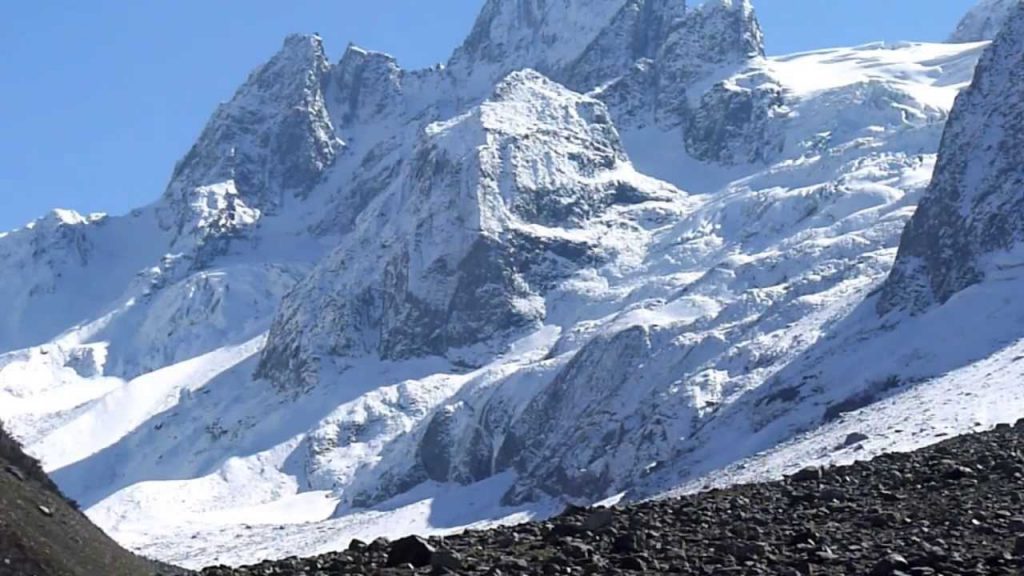
Nature’s fury in Uttarakhand has raised alarm bells in the entire Himalayan region where receding glaciers have posed a big risk to life. In Kashmir, the picture remains grim.
KOLAHOI, the largest glacier in Kashmir and the fountainhead of two significant tributaries of river Jhelum – Lidder and Sindh – is melting rapidly.
A recent research paper has revealed that the largest glacier of Kashmir has further reduced in the area over three years.
The research compares the recent findings to that of a 2017 study.
“Kolahoi Glacier has rapidly receded due to climatic changes prevalent over the Kashmir region. The glacier has lost 23% area since 1962 and has fragmented into smaller parts,” revealed the paper published in the International Journal of Environmental Research and Public Health.
Irfan Rashid, one of the authors of the research paper, told Kashmir Observer that aerosol concentration, especially black carbon, is among the highest reported from the Himalayan glaciated landscapes.
Black Carbon is organic carbon that is wind-driven and deposited on the glacier surface. It’s mostly from fossil fuel (automobiles, factories, brick kilns, etc) and firewood burning (charcoal making in autumn, and hammams in winters).
On being asked about the local factors that have led to the rapid declining of the glacier in the valley, the assistant professor at the University of Kashmir said that tourism in Kashmir is one of the major factors in the rapid receding of the glaciers.
“The promotion of tourism in the alpine landscapes of Kashmir means more anthropogenic (resulting from the influence of human beings on nature) footprint and more biomass burning that are important factors contributing to enhanced aerosol/black carbon deposition and accelerated glacier melt,” revealed Rashid.

According to the research, the Kolahoi glacier has been imbalanced between 1962 and 2018 and is not approaching equilibrium. Equilibrium is attained when the ablation and accumulation of snow on the glacier are the same.
The research mentioned the land system changes in the Lidder watershed. It also stated that the area under irrigation-intensive agriculture has shrunk by 39%, whereas the orchards have expanded by 177% from 1980 to 2017.
The land system changes in the Sindh watershed are not mentioned in the paper.
“Though there have been changes in the land system in the Sindh watershed but since a dominant part of meltwaters from Kolahoi Glacier is released into Lidder, the research team thought it was better to focus on Lidder watershed,” said Rashid.
“Nonetheless, it would be scientifically interesting to look at the land system changes on the other side of the watershed divide (Sindh).”
While the research only took Kolahoi glacier as a point of study, there are other glaciers in Kashmir like Thajiwas group of glaciers, Nehnar, Hoksar which are in a much worse condition, stressed Rashid.
“The Kashmir valley glaciers are showing accelerated retreat as compared to the rest of the Hindukush Himalaya,” said Ulfat Majeed, another author of the research. Small sized glaciers, clean glaciers (glaciers without debris), and the glaciers associated with proglacial lakes are showing greater retreat rates in the valley, he added.

Experts warn that the Himalayan glaciers are melting at an unprecedented rate and there is an acceleration of ice loss across the glaciers over the past 40 years, mentioned a study published in 2019.
“Himalayas have experienced significant ice loss over the past 40 years, with the average rate of ice loss twice as rapid in the 21st century compared to the end of the 20th century,” the study revealed.
The glaciers of the Hindu Kush Himalaya region that produce water for around 40% of the world’s population has lost mass due to climate change and they are predicted to lose more in the future, claimed another study.
“Glacier across Himalaya are receding at a never before pace if we look at the course of human history,” said Rashid. But glaciers in the Karakoram, on the contrary, have been reported to be generally stable, continued the assistant professor.
“The glaciers in the northwestern region (Kashmir) and the eastern Himalayas were reported to be receding at a higher pace as compared to other regions of the Himalayan arc.”

Glaciers form an intricate part of the ecosystem feeding the rivers and serve as a “hydrological buffer” for ecology, agriculture, and hydropower, especially in High Mountain Asia. The melting of glaciers not only impacts the streamflow but also affects all the water-dependent sectors of the economy like hydropower, agriculture, tourism, and many others.
“In a warming scenario, we might also see the formation of glacial lakes some of which might translate into glacial lake outburst floods (GLOF) putting the downstream life and infrastructure at risk,” said Rashid.
Flash floods caused by glacial lakes called GLOF occur when the moraine or rock wall in a glacial lake collapses. A collapse can take place for various reasons including when a large amount of water is deposited in the lake due to unstable melting of the glaciers.
Some of the smaller GLOFs have been reported from the Ladakh and Karakoram regions but it is highly likely that the frequency of GLOFs may increase in the future owing to the receding pattern of glaciers, said Majeed.
The reverse phenomenon could also occur once the glaciers have lost a substantial amount of mass leading to no water to release. Rivers dependent on the glaciers would diminish resulting in a drought condition impacting agriculture and various developmental activities.

While the condition of the environment is deteriorating at an alarming rate, the onset of the coronavirus pandemic brought some relief to the environment.
While pictures of the Himalayas were making round on social media, it might not be an exaggeration to say that the environment was healing when the humans were suffering.
Speaking about the effect of lockdown on the glaciers, Majeed said, “Any reduction in the carbon and anthropogenic footprint on or near the glaciers helps improve their health.”
But it’s important to note, he added, that glacier won’t change state in a day.
Follow this link to join our WhatsApp group: Join Now
Be Part of Quality Journalism |
Quality journalism takes a lot of time, money and hard work to produce and despite all the hardships we still do it. Our reporters and editors are working overtime in Kashmir and beyond to cover what you care about, break big stories, and expose injustices that can change lives. Today more people are reading Kashmir Observer than ever, but only a handful are paying while advertising revenues are falling fast. |
| ACT NOW |
| MONTHLY | Rs 100 | |
| YEARLY | Rs 1000 | |
| LIFETIME | Rs 10000 | |









